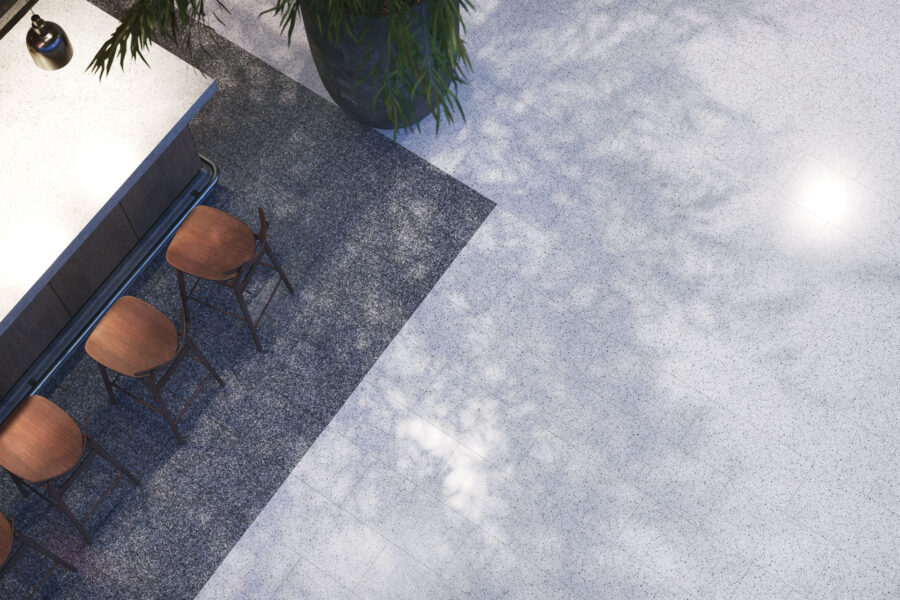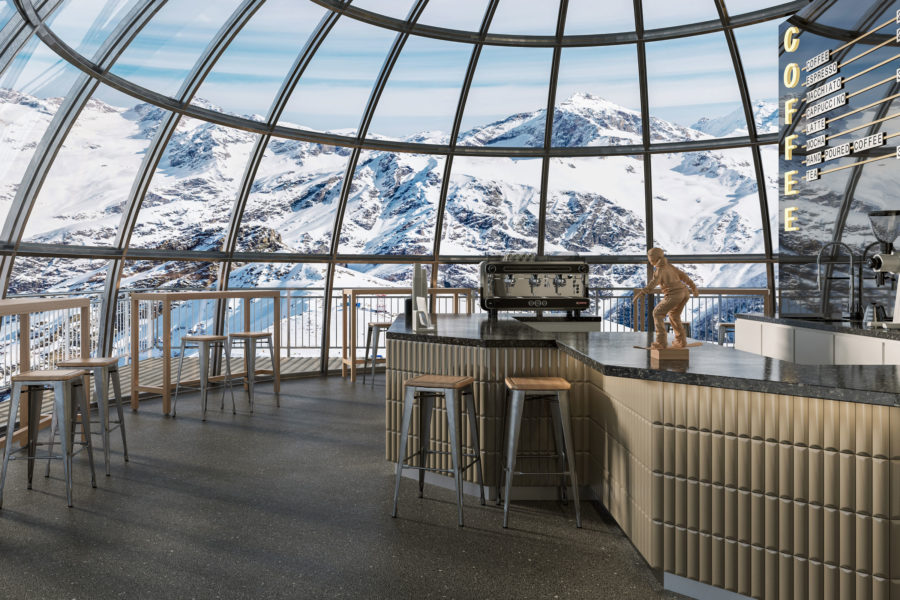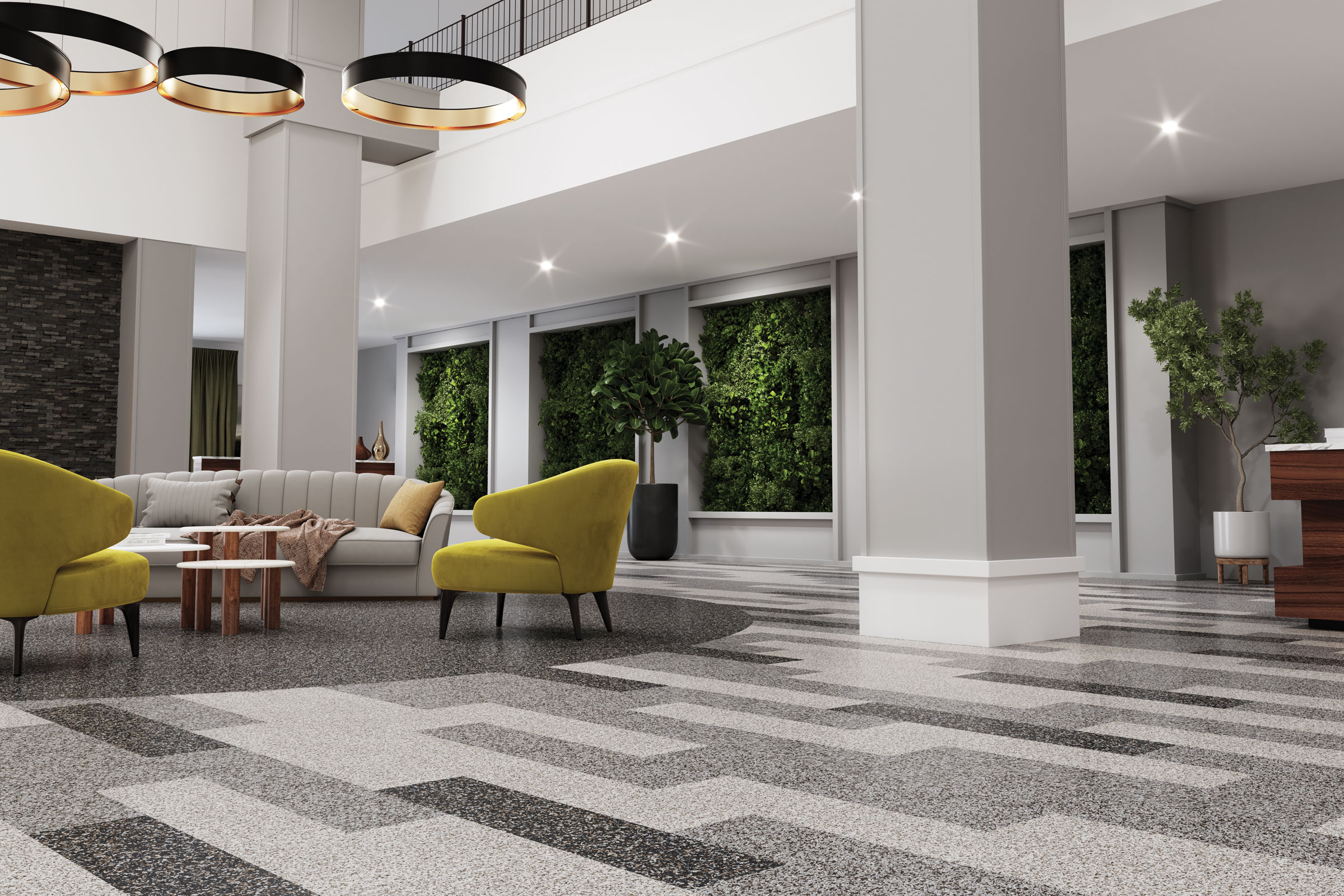Story at a glance:
- REGUPOL is taking some of America’s 280 million discarded tires and turning them into sustainable rubber flooring.
- Durability, safety, and comfort are some of the top benefits that make sustainable rubber flooring a great solution for commercial spaces.
Roughly 280 million tires are discarded annually by American motorists, according to the US Department of Transportation’s Federal Highway Administration. REGUPOL is taking that tire waste and turning it into something good for the built environment—sustainable rubber flooring.
Here’s how the manufacturer has worked to eliminate waste and transform commercial spaces with sustainable rubber flooring for more than 70 years.
How Sustainable Rubber Flooring is Made

REGUPOL’s new upscale line of flooring, as seen in an airport setting. Photo courtesy of REGUPOL
REGUPOL’s sustainable rubber flooring starts with—you guessed it—tire waste. The company partners with a neighboring recycling facility to source its raw materials.
“We have a constant flow of recycled material coming in,” says Bill Neifert, commercial sales director at REGUPOL. “Our recycling partner is right next door, and they supply us with screened, crumbed, and smaller sized recycled tires and make them into small chips all the way down into a fine powdered form that is the consistency of copier ink.” Their proprietary cleaning processes ensure we have the cleanest raw materials for our products.
From there the process is like baking a cake, Neifert says. “Each formula or product category has a recipe that is strictly followed to for each pattern and product with respect to raw material weights and ingredients. The carefully weighed mixture and its binding agent are loaded into a huge mixer that mixes up the batter.”
Then the mixture is dropped into a large cylindrical mold and pressed with more than 100 tons of pressure to ensure the product density. The mixture then sits in the mold to cure at room temperature with no added heat or energy. “It turns into a big rubber log,” Neifert says.
Once released from the mold the rubber log is turned on its side and taken to what’s called a peeler. During this process the rubber log is cut to its precise thickness, and the edges are trimmed to specific width. The final stage of production is cutting to length and packaging the finished material.
REGUPOL’s new rubber tile flooring takes it step further. “With the REGUPOL upscale line we take that and sheet it into sheets, and then we cut it using a technology we’ve found that is able to cut a beveled edge or a square edge perfectly on this material, and we cut it down into 8 by 36-inch or 12 by 24-inch tiles.”
The Benefits of Sustainable Rubber Flooring

Rubber flooring makes this beautiful gastropub even more comfortable. Photo courtesy of REGUPOL
Beyond repurposing tire waste, rubber flooring comes with additional benefits, like:
1. Durability
Rubber flooring is known for its resiliency. Because of rubber’s inherent properties, the material is resistant to scratches, dents, and tears that other flooring materials are susceptible to. It’s also able to easily withstand high foot traffic areas and spills.
“I can honestly not tell you how long it lasts. I have customers who say, ‘We’ve still got the same flooring,’ and it’s been 20, 30 and 40 years,” Neifert says. “The design of the space will go out of style before the floor wears out.”
2. Slip Resistance
Safety always comes first, and rubber’s superior slip-resistant properties, even when wet, can help protect occupants from potential injury.
“From a safety standpoint, having a slip-resistant floor takes the liability off the end user and the client,” Neifert says. Accidents do happen, but if someone was to fall, they’re going down on a softer rubber surface instead of hard flooring like concrete.
3. Comfort
Rubber flooring also offers comfort underfoot. Specifying sustainable rubber flooring is a particularly good solution in commercial spaces where occupants must stand for longer periods, as it provides gentle cushioning and reduces muscle strain and fatigue.
4. Acoustics
Another of rubber’s great natural properties: It’s sound dampening. Specifying rubber flooring allows architects and designers to muffle noise in any commercial space and create a quieter, more peaceful environment due to its sound attenuation.
“The nice part about the rubber is that footfall noise is diminished greatly because of rubber’s inherent properties and the actual cushion of the material,” Neifert says. “It gives you about the same sound attenuation as a low-pile carpet.”
5. Easy Maintenance
“Here’s the beauty of it,” Neifert says. “When it comes to maintenance, all you need is a neutral pH cleaner with a damp mop or a broom or vacuum.”
6. Aesthetics
Commercial spaces aren’t one-size-fits-all, and neither is REGUPOL’s sustainable rubber flooring. Designers can customize the flooring to match any color palette or design.
“I give designers a kit with all different colored EPDM chips, so they can play around and say, ‘Hey, I really like this green’ and can mix it with whatever other color they want to come up with their own custom color,” Neifert says. “That gives a lot of flexibility to a designer to come up with what they want.”
And though old tires may not always be the first flooring solution that comes to mind, sustainable rubber flooring is making a difference in commercial spaces one project at a time.
“Rubber flooring can go more places than it can’t,” he says. “I learn more from designers on where it can go and what they’re trying to do because someone’s always finding a unique application for it. It’s awesome.”



